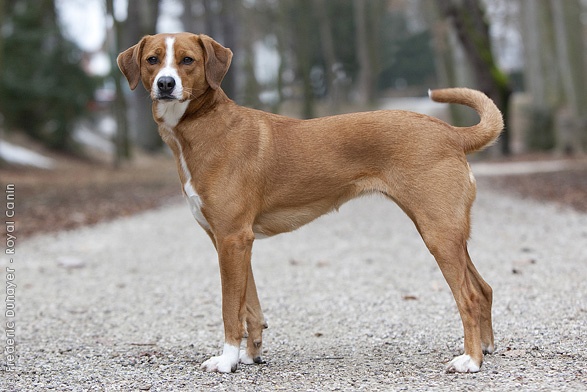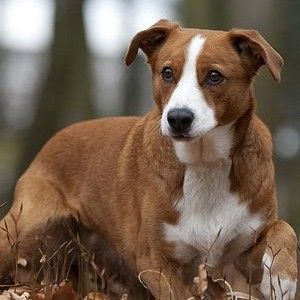
Timing is everything, they say, and it was not in the Austrian Pinscher’s favor. The breed was developed in the 1900s to be an all around farm dog, its roots in the German Pinscher and local Austrian farm dogs of various breeds, but development came as technologies began revolutionizing farming, and the number of farms began to decline. As a result, the breed’s original job as vermin controller and guard dog waned considerably, and the breed was at risk of extinction. Had it not been for Emil Hauck, a veterinarian and breed warden of the Austro-Hungarian Police Dog Association, the breed would have vanished completely. Hauck worked to restore the breed, and was able to re-establish it to the extent that in 1928, the Austrian Kennel Club recognized it in 1928. Though it was originally named the Austrian Shorthaired Pinscher, over time, the “shorthair” descriptive was dropped, and its official name in Austria is now the Österreichischer Pinscher, or Austrian Pinscher.
 The breed is said to be fearless, affectionate, playful and alert – but also headstrong and stubborn. Enthusiastic barking may make the dog a poor choice for city dwellers – if they can find one. Austrian Pinschers are still considered rare, and it’s tough to find a purebred Austrian Pinschers. There are dedicated enthusiasts determined to preserve the breed, but “buyer beware” is in order for potential owners because there are “breeders” passing off dogs which are not purebred Austrian Pinschers.
The breed is said to be fearless, affectionate, playful and alert – but also headstrong and stubborn. Enthusiastic barking may make the dog a poor choice for city dwellers – if they can find one. Austrian Pinschers are still considered rare, and it’s tough to find a purebred Austrian Pinschers. There are dedicated enthusiasts determined to preserve the breed, but “buyer beware” is in order for potential owners because there are “breeders” passing off dogs which are not purebred Austrian Pinschers.
The breed is recognized by the Austrian Kennel Club, and internationally by the Fédération Cynologique Internationale in the Pinscher section of Group 2. In the United States, it’s recognized by the United Kennel Club which is placed it in the Terrier Group for its background as a rat hunter.
Both breed images are from Pinterest and will be happily credited upon receipt of information.
